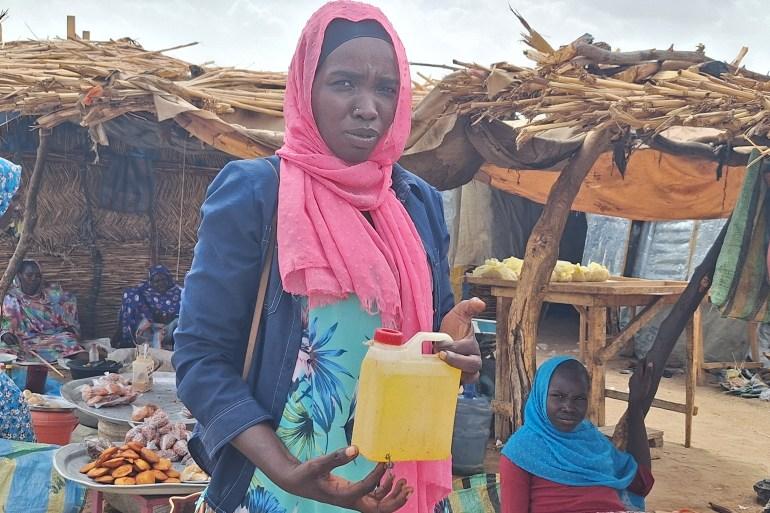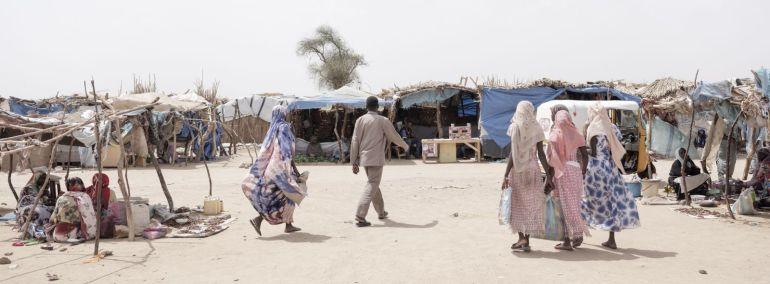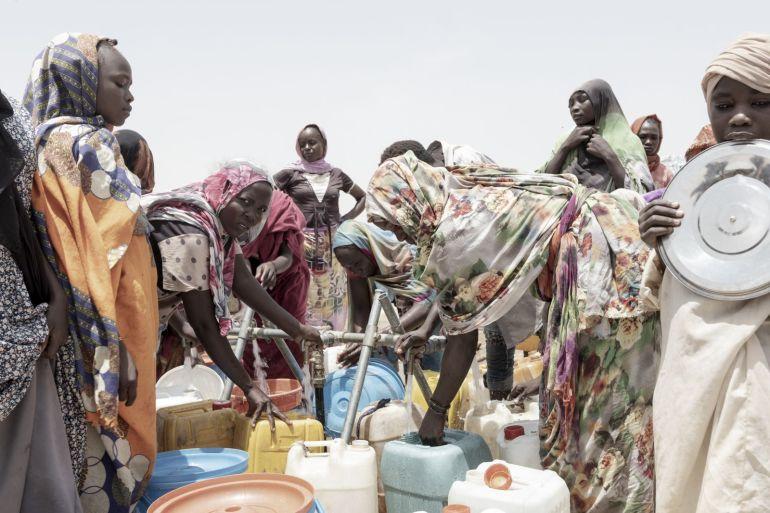Source: ALJAZEERA
ALJAZEERA MEDIA NETWORK

As 600,000 Sudanese refugees flee to Chad, local communities express frustration over scarce resources.
Metche, Chad – A group of village elders gather in the limited shade of a tree to voice their concerns about the influx of Sudanese refugees that threaten to overwhelm their resources. They are worried.
This is Metche, Chad, about 30 kilometers (19 miles) from Sudan’s conflict-ridden Darfur region, where a refugee camp has emerged, offering safety to thousands fleeing violence.
The camp near the village consists of makeshift shelters made of straw, cloth, tree branches, and tarps. These shelters are separated by narrow, busy paths where cattle, motorbikes, and pedestrians navigate.
Approximately 600,000 people have sought refuge in Chad due to the civil war in Sudan that erupted in April 2023. Their presence has caused local resentment to grow.
Relocated to one of six camps, including the one near Metche, these refugees now coexist with thousands of rural Chadian farmers and pastoralists.
According to two men from Metche, the United Nations agencies constructed the refugee camp on a significant swath of farmland essential for the local community’s food production and water access.
“We were farmers before the refugee crisis, but now the refugees are the ones that work our land,” said Adam Abdallah Suliman, a local community leader.
The UN refugee agency’s representative in Chad, Jerome Merlin, explained that the camps were established with local leaders' consent, ensuring sufficient water and land for both refugees and locals.
“There are some tensions because … Chad received more than 600,000 people in one year. Can you imagine?” Merlin said via phone.
 Daily life in Metche camp, where between 40,000 to 50,000 Sudanese refugees reside.
Daily life in Metche camp, where between 40,000 to 50,000 Sudanese refugees reside.
Suliman, a slim Chadian man in a traditional white gallabia and turban, started to open up about the tensions between his community and the refugees when a heavy downpour began.
Reporters and aid workers hurried to their vehicles to avoid flooded roads, while Chadian women prepared to fetch water from the wadis.
Before the rain, Suliman told Al Jazeera that flash floods fill the nearby wadis during the rainy season, essential water sources for the community.
However, “the [refugees] also take water from the wadis when it rains,” he said. “There’s hardly any water for us.”
Conversely, Sudanese refugees often face attacks when leaving the camp to find water or gather firewood, according to Salwa Malik, 27, a resident of Metche refugee camp.
Malik revealed that older women are now sent to gather firewood, hoping they remain safe from attacks.
“I personally know at least three cases of women who have been raped,” Malik said. “We’re now sending much older women out of the camp to get firewood, hoping they won’t be attacked.”
She also mentioned that armed “strangers” often enter the camp, intimidating refugees and sometimes attacking young Sudanese men.
“I know at least two people who have been murdered by intruders in the camp,” Malik added.
 Sudanese refugee women leave the camp to get water from the wadis after the rains.
Sudanese refugee women leave the camp to get water from the wadis after the rains.
The war has significantly burdened host communities, which already endure some of the highest levels of food insecurity worldwide, according to the World Food Programme (WFP).
Despite this, food assistance for Sudanese refugees and Chadian communities is severely underfunded, with only 19 percent of WFP’s requested budget met by donors.
Vanessa Boi, WFP emergency coordinator for Chad, explained that the majority of funds are allocated to refugees, leaving local communities in dire need.
WFP’s deputy country director, Koffi Akakpo, stated that relief assistance is often “earmarked” exclusively for refugees, preventing the redirection of funds to local priorities.
Food aid to some host communities will resume for June, July, and August.
Aid groups highlight that to ease tensions, a shift from emergency to development response is necessary – this includes building schools and hospitals, expanding farmland, and improving water access.
Adre, which hosts new arrivals from Darfur before relocation to camps, is a particularly strained area, hosting 185,000 refugees compared to 40,000 locals.
Adre’s governor, Mohamad Issa, acknowledged the rising tensions, calling for specific aid for Chadians to prevent their suffering from hunger and thirst.
This story was supported by a reporting trip facilitated by EU Humanitarian Aid to eastern Chad.
Your email address will not be published. Required fields are marked *